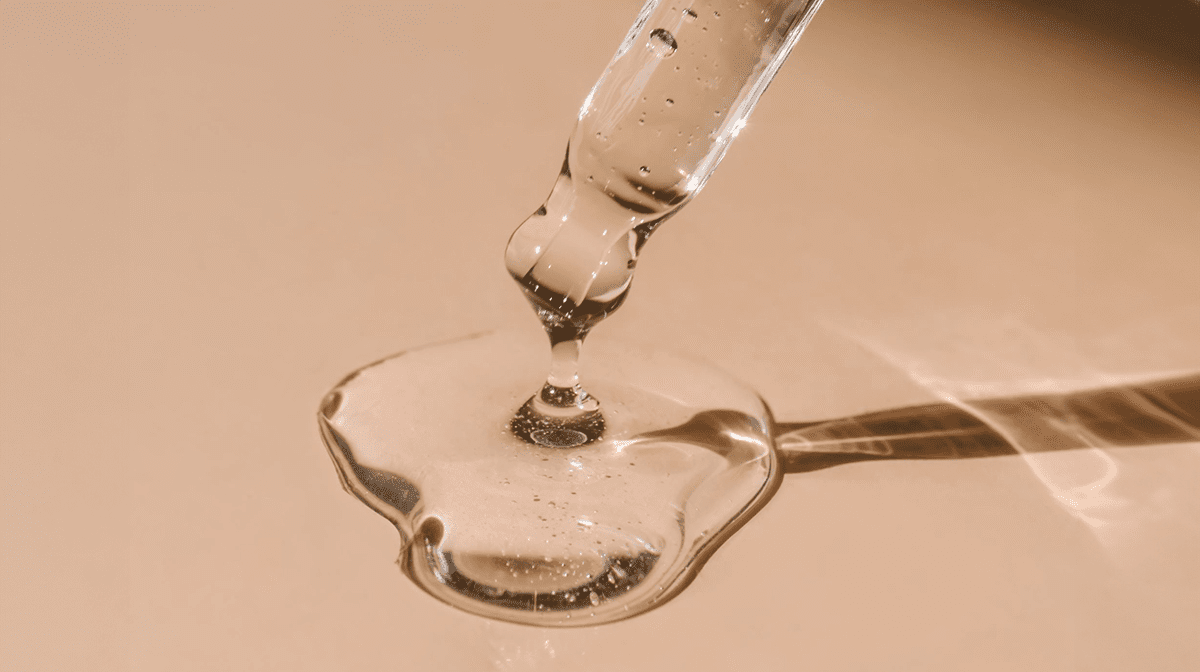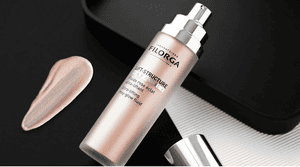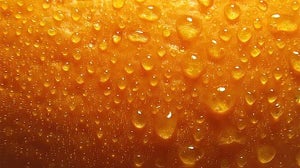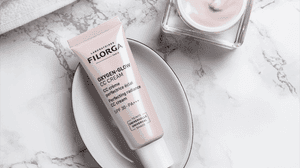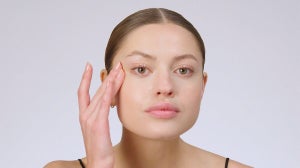
Everyone has a unique skin type, meaning suitable and specific cosmetic products need to be used. So, knowing your skin type is essential to properly tailoring your beauty routine. Our experts have put together this comprehensive guide to help you determine whether you have oily, dry, combination, or normal skin. This article looks at the history of the classification of different skin types and the internal and external factors that can affect them.
We will also explain how you can identify yours and give you advice on the FILORGA treatments best suited to caring for your skin.
A brief history of skin types.The origins.
The terms “dry”, “oily”, “mixed”, and “sensitive” were coined in the early 1900s to describe different skin types. Cosmetics manufacturers of the period felt that these were the best terms to describe what could be considered the four fundamental skin types.
Over the course of the next century, these categories continued to be used with only minor adjustments. At the time, this classification system had (and still has) the advantage of being easy to understand, concise, and accurate enough to be widely used by everyone, from the general public to highly specialised dermatologists.
A new kind of classification.
In the early 2000s, dermatologist Leslie Baumann developed her own classification system, the Baumann Skin Types Indicator (BSTI), believing the established criteria to be incomplete or unsuitable descriptions of the skin.
This classification system was based on four distinct parameters characterising the skin: dry or oily, sensitive or resistant, pigmented or non-pigmented, and wrinkle-prone or tight. An assessment of the skin based on these parameters yielded 16 potential skin types. And this 'diagnosis' is established by means of a 64-question self-assessment questionnaire.
Although the idea was initially appealing, it quickly encountered a major problem: its complexity. Its lengthy questionnaire and overly elaborate results meant that it was not embraced by either the cosmetics industry or consumers.
As a result, the old classification system from the 1900s is still used today.
Classification by risk of disease.
To be absolutely comprehensive on this subject, we need to mention a third and final classification system, that of the Skin Cancer Foundation. Inspired by a classification schema called the Fitzpatrick Skin Type, it defines six skin types, known as phototypes, ranging from very light (type 1) to very dark (type 6). This system is based on how the skin reacts to the sun and is used to assess the risk of carcinomas and melanomas, or skin cancers.
Why don't we all have the same skin type?
Skin type diversity among individuals is the result of a complex combination of internal factors, including:
Genes.
Genes play a fundamental role in determining skin type. The characteristics of our skin, just like our other physical and physiological characteristics, are the result of gene expression. And while the genes responsible for skin colour and sebum production are the same for everyone, the way they are expressed differs from person to person. It's a bit like blood types. All of us share the same genes determining our type, but the different ways in which they are expressed lead to the existence of 8 distinct blood types (A, B, AB, and O, and each can be rhesus-positive or rhesus-negative).

Hormonal status.
Hormones do not play a role in skin structure. However, they do have a significant impact on the production of certain substances in the skin, like sebum (link to article 30 : planned this month). For example, during puberty, the secretion of hormones such as testosterone increases sharply, leading to increased sebum production. This is why many teenagers tend to have oily or acne-prone skin during this time. For women, pregnancy brings major hormonal changes and an increase in sebum production. The latter is also greatly affected by the menstrual cycle. Lastly, the menopause represents another significant period of change. At this stage in a woman's life, hormone levels drop, and unlike during puberty and pregnancy, sebum production decreases, leading to drier skin.
Skin microbiota.
Much like our intestinal flora, which is unique to each of us, the composition of our skin's bacterial flora varies from person to person and influences both the quality and health of our skin.
Can skin type change during our lives?
In order to answer this question properly, it's important to distinguish between skin type and skin condition. Skin type, as we've seen, is mainly determined by genes, hormonal status, and our individual skin microbiota. These are internal factors that are unique to each individual and that we have little (if any) control over during our lives. On the other hand, the condition of our skin can change as a result of external factors. Since we have direct control over these factors, we can influence the condition of our skin. The following two are the most important:
The environment.
Sun exposure, air pollution, and other environmental factors all have an effect on skin health. For example:
Excess exposure to ultraviolet (UV) radiation will result in dehydrated, dry skin.
External stresses like air pollution and fine particles can clog pores, increasing sebum production and the risk of imperfections and acne. Pollution can also cause inflammation, hypersensitivity, and rashes.
Skin health can also be affected by other environmental factors like wind, extreme heat, cold, and humidity. For example, seasonal changes can cause the skin to become drier or more sensitive. Sebum production is at its peak during summer, while during winter, the amount of lipids and natural moisturising factors in the skin, as well as pH, all drop, leaving the skin dehydrated. Also, during autumn and spring, significant temperature and humidity fluctuations mean that the skin has to work hard to adapt, which can lead to rashes and dryness.
Diet.
Drinking enough water, eating high-quality proteins, and regularly enjoying foods rich in antioxidants, vitamins, and minerals like fruit, vegetables, and wholegrain cereals can contribute to and preserve the skin's appearance.
However, excessive intake of dairy products and sugar tends to increase sebum production, while a diet rich in omegas will decrease inflammation.
So, while skin type is permanent, skin condition generally isn't and can be improved with appropriate cosmetics or care.
Normal skin, dry skin, oily skin, or combination skin — figuring out your skin type so you can choose appropriate treatments.
Now that we've explored what influences skin type, let's look at how to determine your skin type and what treatments the FILORGA experts recommend accordingly.
Figuring out your skin type.
A quick, easy way to determine your skin type is to monitor how it looks and feels throughout the day.
If the skin on your entire face is shiny throughout the day, you have oily skin.
If this is only the case for the T-zone, then you have combination skin.
If your skin often feels tight or feels tight only after showering or cleansing, then chances are you have dry or normal skin.
Normal skin.
Normal skin presents no irregularities, few or no imperfections, and does not have visible pores. It feels supple and comfortable. Its texture is smooth. This means a stable level of hydration and normal skin barrier function. Hydration levels in normal skin need to be maintained.
Our TIME-FILLER, NCEF-REVERSE, SKIN-UNIFY, OXYGEN-GLOW, and HYDRA-HYAL ranges are suitable for normal skin, and we recommend the cream versions of HYDRA-HYAL, TIME-FILLER 5XP, and NCEF-REVERSEfor normal to dry skin.
Dry skin.
If your skin often (or always) feels tight throughout the day, is rough to the touch, and your complexion is somewhat dull overall, then you have dry skin. Dry skin has lower sebum, intercellular lipid, and natural moisturising factor (NMF) production. It therefore requires nutrition and support.
For this, we recommend including products from the GLOBAL-REPAIR range and the HYDRA-HYAL serum in your skincare routine.
Oily skin.
Oily skin causes the whole face to appear shiny, and this gets more pronounced as the day goes on. It is prone to blemishes like pimples, blackheads, and visible pores. This is the result of excessive sebum secretion and an imbalance in the hydrolipidic film on the skin's surface.
Oily skin needs to be purified, mattified, and moisturised.
Our AGE-PURIFY range is especially suited to oily skin (and combination skin) that is prone to blemishes and imperfections. We also recommend the lighter gel-cream versions of HYDRA-HYAL, TIME-FILLER 5XP, and NCEF-REVERSE MAT.
Combination skin.
Finally, combination skin tends to have a shiny T-zone (forehead, nose, and chin) and normal to dry areas on the cheeks.In other words, it combines the characteristics of both dry and oily skin. Combination skin requires rebalancing and moisturising.
Our experts suggest using the same products that are recommended for oily skin.
To close this article, we'd like you to take note of the fact that all of our products have been clinically tested on different skin types, or on all of the skin types for which they were formulated. This means that Laboratoires FILORGA can provide a range of textures to meet the needs of all of our customers.

